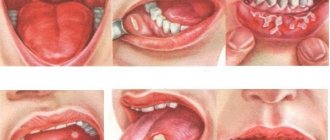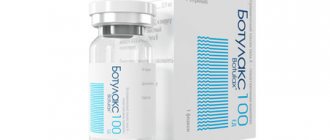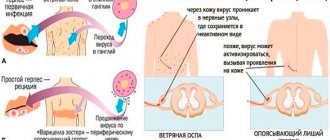In our age of great technology and high speeds, unfortunately, there are often moments when a person receives one or another injury. It is much more difficult if the injured part of the body is the head, and even more so, its facial part.
Since the human face is a very complex part of the body, surgeons have a great responsibility for correcting traumatic defects and deformities in this area.
So what needs to be done if something irreparable happens and someone, despite all attempts to correct the situation, still receives a facial injury. Firstly, do not panic; you need to seek help from a specialist, for example, the Center for Dentistry and Maxillofacial Surgery, as quickly as possible. At our Center, specialists have everything necessary to diagnose and treat various facial injuries, with the exception of serious concomitant and combined injuries, when the help of many specialists is required in an inpatient setting.
Despite the fact that injuries vary in complexity, we still recommend visiting an oral and maxillofacial surgeon to rule out the possibility of a more serious injury, such as an abrasion or hematoma.
So let's figure out what types of facial injuries there are.
Symptoms of manifestation
Bruises on the face are difficult to ignore. It is characterized by knowledge of all standard symptoms, such as:
- Painful sensations in the facial area. And they are usually felt strongly because the ends of the facial nerves are among the most sensitive;
- Tissue swelling. This manifests itself as swelling of the skin, which may appear thickened upon palpation. The severity of edema depends not only on the severity of the injury, but also on the thickness of the skin and the internal structure of the tissues. Therefore, the area around the mouth and face is most susceptible to swelling;
- Bruises, bruises and hematomas. They arise as a result of damage to blood vessels and the accumulation of platelets in the damaged area. It’s worth saying right away that the deeper they are under the skin, the later the reaction will appear, but, unfortunately, the longer it will take. For this reason, many people start using ointments and gels for bruises even before visible signs appear;
- Feeling numb. This occurs in cases where the fibers of the facial nerve were directly affected during the injury. If nerve damage is very severe, there is a risk that reduced nerve activity may persist;
- Disruption of various areas of the face. Examples include: inability to see if the eye is swollen, difficulty breathing if the nose is injured, difficulty chewing food if the jaw is injured;
- Open bleeding. Observed when the skin is damaged at the site of the bruise and there is an open wound or deep scratch;
- Nausea, vomiting, loss of consciousness, convulsions. Such serious symptoms can occur if a bruise of the soft tissues of the face is accompanied by a traumatic brain injury and, as a consequence, impaired brain function.
Bruises and bruises are symptoms of contusion of the soft tissues of the face.
Of course, each of these symptoms may vary in severity in each individual case. Much depends on the individual characteristics of the body, such as the thickness of the skin or the elasticity of blood vessels. So, with one type of injury, one person may only have swelling, while another may have a severe hematoma.
Is there swelling on the face due to heart disease?
Yes, these questions usually worry women, says cardiologist Andrei Grachev.
They run to see a cardiologist when they can’t put a ring on their finger in the morning because it’s swollen or put on makeup because their face is swollen. The patient wants to look great, regardless of age and health status. And this is commendable. Men, as a rule, do not contact a cardiologist with such questions. The peculiarity of this issue is due to the fact that in patients with cardiovascular diseases, as a rule, swelling on the face appears at the final stage of a complication such as heart failure. First, they appear on the legs (the lowest point in relation to the heart), then fluid accumulates in the abdominal cavity, the liver and spleen enlarge (as a blood depot). And only after the fluid reaches the pleural cavities and the heart sac, swelling may occur on the face or hands.
First aid
First aid is recommended for injuries to the soft tissues of the face, regardless of the force of the blow. Here are three basic steps in this situation:
- Place something cold on the bruised area. This could be ice, snow, a compress soaked in cold water, or even a chilled metal spoon. Cold helps constrict blood vessels, reducing the risk of bruising under the skin. However, there are two things to keep in mind. Firstly, facial skin is quite thin and cannot be exposed to prolonged exposure. The optimal time is 15-20 minutes. The procedure can be repeated after 2 hours. Use material that protects the receptors from hypothermia. The second point is that the effectiveness of this method is available only in the first half hour after injury;
- If there are signs of skin trauma, be it wounds or abrasions, it is important to treat them with antiseptics. The most common of them are the well-known hydrogen peroxide, herbs, and a very weak solution of manganese solution. This must be done very carefully, since every touch to the wound can cause pain to the victim;
- Anesthesia. If the sensations are strong, you should turn to painkillers. Among them are Ketone, Ketorol, Ibuprofen. Before use, be sure to read the instructions.
First aid for bruised soft tissues of the face includes applying ice.
In most cases, the listed first aid measures for bruises are sufficient. However, if the injury is much more serious and the victim experiences heavy bleeding or convulsions, then the first step is to call an ambulance. When traveling, control bleeding with a tourniquet or position the person so that they do not risk swallowing their tongue.
It is important to remember that the method of providing first aid will affect the result of further treatment of facial bruises and the likelihood of developing complications.
When to see a doctor
You need to visit the emergency room in all cases of injury to the head, chest, back, or abdomen. They can have serious consequences in the future, and it is difficult to assess the condition of the victim in the first hours. Often a person feels satisfactory due to the pain-relieving effect of the release of stress hormones, even with severe injury.
Warning signs requiring emergency medical attention include:
- severe weakness;
- pale skin and cold sweat;
- drop in blood pressure (below 100 mm Hg for systolic, that is, the upper level);
- weak (thready) pulse;
- nausea and headache, dizziness, lethargy, stunned state;
- difficulty taking a deep breath, lack of air;
- interruptions in heart rhythm;
- fainting;
- inability to move due to weakness of the legs and arms;
- coughing up blood.
Extensive swelling with severe pain and difficulty supporting the limb often occurs with a fracture or dislocation, or torn ligaments. They require mandatory x-rays and sometimes require fixation with a plaster cast. Such injuries cannot be cured with external remedies and pills.
You can relieve swelling after a bruise in the first day with cold and ointments that facilitate the outflow of blood. In the future, physiotherapy is used, and for minor injuries, folk remedies are used. Prolonged pain and swelling are signs of serious injury or complications.
Diagnostics
A bruise is easy to diagnose, but only doctors can determine its severity and possible complications. Therefore, if for any reason the injured area is bothering you, it is better not to waste time and seek professional help. The diagnosis can be made:
- inspection;
- palpation;
- Assessment of symptoms and complaints;
- In some cases, an ultrasound or x-ray examination may be required.
Diagnosis consists of determining not only the presence of a bruise, but also its severity. There are four degrees:
- First degree. This is the easiest and least dangerous option, involving a slight change in the structure of the subcutaneous tissue. There is no bleeding or hematoma, but blue skin discoloration is quite possible. For the first degree of injury, visiting a doctor is usually not required. It is quite possible to limit yourself to home remedies, which, with the right approach, will help eliminate symptoms in 5-7 days;
- Second step. In this case, significant damage to the subcutaneous and muscle tissue occurs. Severe swelling, pain and even hematoma may appear. It is better to treat such a bruise with medications together with physiotherapeutic procedures;
- Third degree. It damages not only muscle tissue, but also tendons. In some cases, the integrity of the skin may be compromised. Since there is a risk of developing an infectious process, examination by a doctor is mandatory.
- Fourth degree. This is the most severe and dangerous degree of injury. It is always accompanied by injuries not only to soft tissue, but also to bone tissue. In this case, there is a high risk of developing various types of complications. It is imperative to seek qualified medical help.
Accordingly, the type of treatment will directly depend on the degree and nature of the bruise.
Why does swelling persist for a long time after a bruise?
If after a bruise the swelling does not go away for a long time (more than 5 days), then there is a risk of suppuration, extensive or deep tissue damage. Recovery is also slower in cases of weak blood circulation in elderly patients with vascular diseases or venous insufficiency (for example, varicose veins of the lower extremities).
It is impossible to independently determine the cause of swelling and prolonged stagnation of blood, difficulty moving, therefore, such symptoms require examination by a surgeon or traumatologist, radiography and other diagnostic methods.
Treatment
Treatment methods for bruises can be divided into two large groups: traditional in the form of drugs and treatment methods, and non-traditional in the form of traditional medicine. Ideally, you can combine techniques from both groups. This solution will help you get rid of bruises in less time.
Medication
If the situation does not require hospitalization, the bruise is treated using standard methods. Namely:
- Preparations for external use: gels, ointments, creams;
- Physiotherapeutic procedures. These include electrophoresis, heating, laser therapy. All these procedures are aimed at eliminating subcutaneous clots and stimulating skin regeneration.
Creams, ointments, and other treatments for bruises are widely available.
In every pharmacy you can find a huge selection of such products. But when choosing, it is important to pay attention to the composition, influence and age restrictions. Not all products are suitable for children.
With regular and correct use of the ointment, you can get rid of bruises and swelling within a few days. And if you supplement your treatment with physical therapy, you can expect results even faster.
Traditional methods
Bruises and bruises can also be treated with traditional medicine. The only rule is that you can start using them a few days after the injury.
Among the folk recipes for bruises and bruises on the face it is worth mentioning:
- Cabbage leaf or raw potato. They should be applied to the damaged area. Thanks to this, swelling quickly decreases;
- Honey. Has a good laxative and anti-inflammatory effect. You can even not limit yourself to the area of the bruise, but apply honey all over your face, creating the appearance of a mask;
- Camphor oil. To obtain the effect, it must be applied with light rubbing movements;
- Compresses. It is best to cook them with onions or salt;
- Alcohol-based compresses. In this case, the rosemary plant can be the basis. Has a warming and antiseptic effect;
- Arnica decoction. This measure is applied not externally, but internally. It not only strengthens the immune system, but also stimulates regenerative processes.
Applications with honey are a folk method for treating bruises of the soft tissues of the face.
And, of course, one should not underestimate the influence of standard massage measures in the form of light stroking and rubbing.
Consequences
Complications with bruises are quite possible. It all depends on the nature of the injury and which area of the face was damaged. Possible consequences include:
- Nerve damage. completion. This is quite dangerous, since it is not always possible to fully restore their functionality. This means that the affected part of the face may stop moving;
- Deterioration of vision. If the area around the eyes is bruised, there is also the possibility of damage to the nerve responsible for visual functions. Again, the outcome depends on the nature of the injuries. Both partial and complete loss of vision is possible, which is much less common;
- suppuration at the site of the bruise in the form of an abscess;
- bleeding that, if not treated immediately, may lead to fainting or shock;
- Cyst formation in the presence of hematomas.
In case of serious injuries, the bruise may be accompanied by a concussion, deformation of the bones of the nose or jaw. As a result, a person may later suffer from conditions such as sinusitis or sinusitis.
Prevention
Almost all of us have had bruises on the soft tissues of our faces in our lives. Unfortunately, this cannot be completely prevented. However, in order to at least minimize the risk, it is necessary to take basic precautions and safety measures. When it comes to children, it is important to teach them from an early age how to avoid traumatic situations.
If facial bruises do occur, do not leave it unattended and take appropriate measures. You can do this yourself or seek medical help.







